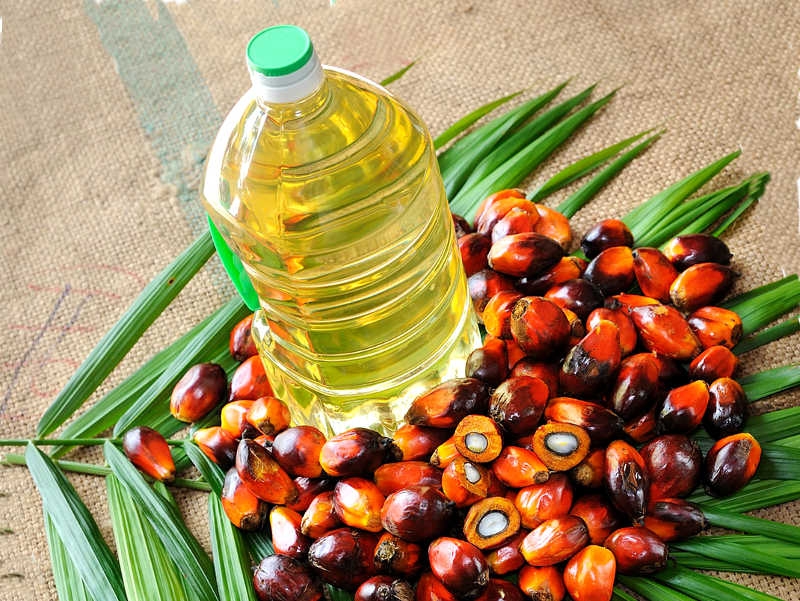Vietnamese Vegoil Market Is to Expand to USD1.5 Billion by 2024

According to the market research firm Nielsen, the Cooking Oil market in Vietnam is estimated at 30 trillion VND/year (USD1.3 billion) and continues to grow each year. The domestic Cooking Oil industry has much potential for development and expects to reach VND35 trillion by 2024. Currently, the consumption of Cooking Oil by Vietnamese people is lower than the World Health Organization’s recommended standard of 13.5kg/year. However, the Ministry of Industry and Trade expects this figure to increase to 16.2 – 17.4 kg/person per year and reach 18.6 – 19.9 kg/person per year by 2025.
In 2020, the refined Vegetable Oil production volume reached around 1.35 million tons in Vietnam. The volume of refined Vegetable Oil produced in Vietnam has been increasing yearly. Vietnam needs over 1.5 million tons of Cooking Oil each year, but domestic production can satisfy a limited share of the demand, while imports must feed the remaining.
The environment and climate in Vietnam are not suitable for growing Palm trees. Domestic raw materials for Vietnamese enterprises are mainly sesame, peanuts, and rice bran. Most of the raw materials for Palm Oil must be imported from Malaysia and Indonesia, and some Cooking Oils from Singapore. According to the AgFlow data, Palm Olien leads the Vegoil imports by 372,000 tons, followed by Palm Oil, Soybean Oil, and Palm Stearin in the shipment period of Jan-August.
Statistics from the Ministry of Industry and Trade show some 40 firms are engaging in producing and trading Cooking Oil in Vietnam, of which Palm Oil makes up 70 percent and Soybean Oil accounts for 23 percent, respectively.
In terms of the market players, the leading player is Calofic, and the second is the Tuong An Oil brand of Kido Group. Tuong An’s share grew from 30% to 39% in 2021 and is forecast to surpass Calofic in the coming years, whereas the business community sees opportunities to enter in the Vietnamese Cooking Oil market.
Tuong An plans to diversify product portfolios, optimize supply chain models, and operate efficiently. Also, Tuong An will continue to focus on increasing market share in two mid and high-end product lines, upgrading and developing products according to market trends, and meeting the needs of consumers to the fullest.
The enterprise said it would invest in expanding Phu My factory, upgrading the capacity of the refinery, investing in some items of machinery and equipment, and developing warehouses and storage tanks. For Vinh factory, Tuong An will expand the construction area from 8,800 m2 to 17,000 m2, increasing the capacity of the Oil plant from 40,000 tons/year to 150,000 tons/year to reduce production and logistics costs while increasing the supply capacity of goods for the North and Central markets.
The market segmentation is based on use, consisting of four categories: Cooking Oil for frying and sautéing, specialized salad Oil for mixing Vegetables, Nutritional Oil to supplement essential vitamins, and Solid Oil for baking. However, consumers often use the same blended Cooking Oil for many different purposes.
Restaurants or eateries often buy large cans of 10 to 30 liters of Oil, while households often choose 250ml, 400ml, or 1 to 2 liters bottles. Vietnamese people usually purchase large quantities at supermarkets to enjoy discounts and promotions and ensure the quality of their goods.
Moreover, consumers still do not fully understand the difference among types of Vegetable Oils, which leads to weak purchasing power for nutritious salad and Solid Oils such as Canola Oil and Olive Oil. Vietnamese consumers now tend to shift widely from animal-based to healthy Vegetable-based Cooking Oils.
Tags: soybean oil, Vietnam, Production, vegoil, palm oil, imports, cooking oil, Market, shipment, palm stearin, palm olien
Read also
Couldn’t attend BLACK SEA GRAIN.KYIV? Catch up with the insights – get the e...
Another batch of Ukrainian grain was delivered to Sudan
Grain harvest in Russia in 2024 may drop to 135-136 mln tons due to drought
The 21st International Conference BLACK SEA GRAIN.KYIV took place in Kyiv on April...
Sunflower oil production in the world is growing and “breathing down the neck” of ...
Write to us
Our manager will contact you soon












